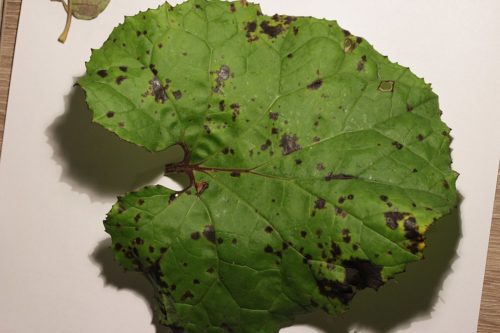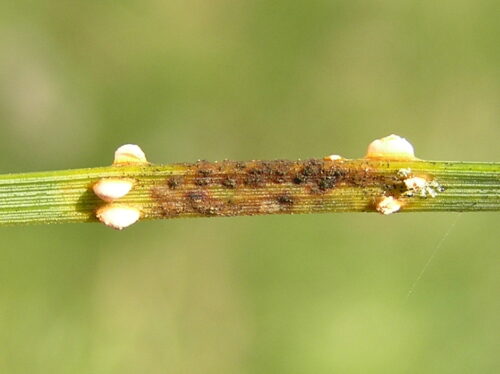Coleosporium tussilaginis is a rust fungus that infects pines.
Do not confuse with:
Chrysomyxa spp – another rust fungus
Coleosporium tussilaginis. This rust fungus infects pines – however, only on pines whose needles are in pairs (two-ranked). Among others, Pinus sylvestris and Pinus mugo. Vesicles with orange-colored spores form on the needles.
In addition to the pines, these spores can infect herbaceous plants in the immediate vicinity, such as Ligulariaand bellflower Campanula. Orange-colored fungal globules form on the undersides of the leaves of these herbaceous plants. Daisies (Chrysanthemum) and Ismelia can also be infected by a form of Coleosporium tussilaginis. The fungus Coleosporium has a few species, each plant susceptible to rust has its “own” variation.
A second fungus can develop on Coleosporium: it parasitizes on the already emerging fungus.
Where to find
- Pine (Pinus)
- (Ligularia)
- Bellflower (Campanula)
- Daisies (Chrysanthemum)
- Ismelia
Control
Remove affected branches and leaves (herbaceous).
Prevention
Prevent damage to herbaceous plants near pines: make sure the wind has free rein near pines.


